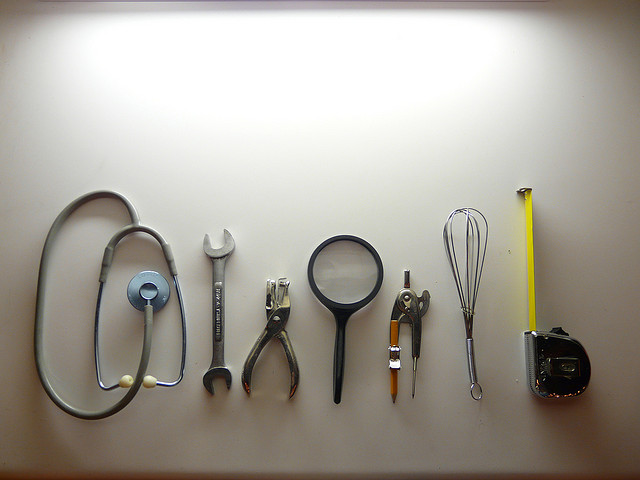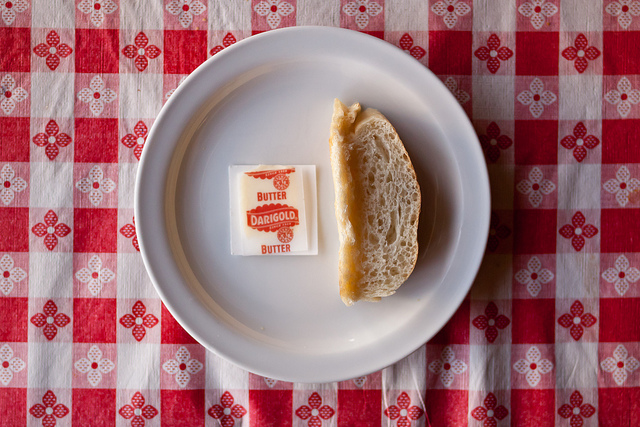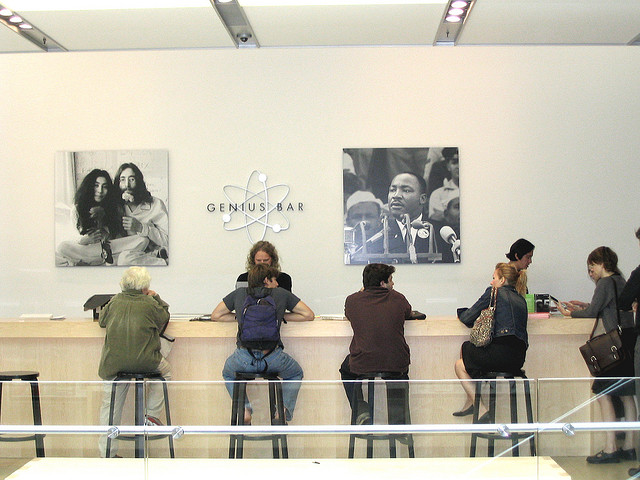Unlock the Magic in Your Story Now
Get the Free 20 questions to Ask Before Launching Your Idea workbook when you sign up for occasional updates.
Get the Free 20 questions to Ask Before Launching Your Idea workbook when you sign up for occasional updates.
Articles filed in: Storytelling
Efficiency, Quality, Value And Soul
filed in Marketing, Storytelling, Strategy
 A new public hospital is opening in Perth this week and along with cutting edge medical facilities patients can expect a state-of-the-art “free-roaming food delivery robots”. Our local newspaper reported that, “The 300kg AGVs will deliver up to 2200 meals a day, directly to wards without human intervention, once they leave the kitchen.” The theory being that quality will be improved if the time between cooking and delivery is reduced.
A new public hospital is opening in Perth this week and along with cutting edge medical facilities patients can expect a state-of-the-art “free-roaming food delivery robots”. Our local newspaper reported that, “The 300kg AGVs will deliver up to 2200 meals a day, directly to wards without human intervention, once they leave the kitchen.” The theory being that quality will be improved if the time between cooking and delivery is reduced.
The system is efficient and if the temperature of the meal when it reaches the patient is the measure of quality then this high tech solution wins—but do absolute improvements in quality always increase value?
A hospital administrator who can point to savings and reduced labour costs over time has data to prove efficiencies. It’s assumed that efficiency and value go hand in hand. But value is subjective, not absolute and in many business settings we underestimate the value of things that we cannot measure. We know that even expert opinions of quality can be subjective. Yes, it’s true that wine labels really do change the perception of the contents of the bottle.
Perhaps the value, or even the enjoyment of the meal served to a sick person can’t be measured by how quickly it was served? Maybe how it got there, who brought it and how they interacted with the patient matters too? Often the people who get closest to patients in hospital wards are not the highly qualified medical team who treat, or specialist nurses who monitor—they are the people who carry out the routine tasks of wiping down bedside lockers, filling water jugs and delivering meals.
It’s easy to argue for more humanity when we’re talking about how we design environments and public services for people when they are at their most vulnerable. But the efficiency vs. soul conundrum is worth considering in relation to products we create and services we sell.
Remember back to the first time you used an iPod and contrast that with your experience of an MP3 player of the time. What you probably sensed was the intention behind the design. Imperceptible details that made the iPod more than something that was simply functional. You knew that a person who cared had tried to experience the world through your (the future user’s) eyes and thus created more than a utilitarian device.
The interesting thing about many of the successful upstart businesses born from the digital revolution we are living in, like Warby Parker, Airbnb, Uber and Task Rabbit is that despite being predominantly digital businesses they have found ways to put the humanity and soul back into service industries that had been stripped of those things, often for the sake of efficiency.
It turns out that imperfect people like us don’t always want the most perfect of solutions. When we have a choice, we choose and value soul over efficiency almost every single time.
William Bruce Cameron’s words have never felt more relevant than they do today.
“It would be nice if all of the data which sociologists require could be enumerated because then we could run them through IBM machines and draw charts as the economists do. However, not everything that can be counted counts, and not everything that counts can be counted.”
———
Thanks to my son Kieran for nutting this one out with me and for being the amazing person he is—one who talks about nurturing food and phones having soul.
Image by Emily Barney.
Make Things People Want
filed in Marketing, Storytelling, Strategy
 Marketing means different things to different people. To some businesses it’s about Facebook engagement, to others it’s all about analytics or SEO, advertising or PR. If you’ve got the budget it could be a glossy image of Hugh Jackman—your 18K red gold watch, which has been “Crafted for New Heights” peeking from under his freshly starched white shift cuff.
Marketing means different things to different people. To some businesses it’s about Facebook engagement, to others it’s all about analytics or SEO, advertising or PR. If you’ve got the budget it could be a glossy image of Hugh Jackman—your 18K red gold watch, which has been “Crafted for New Heights” peeking from under his freshly starched white shift cuff.
Marketing as we have known it was designed to make us fall a little more in love with something. We’ve spent all this time trying to make people want things and do things, when all the while we should have been making things people want and doing things they want us to do.
If you can’t afford Hugh (or even if you can), it’s not too late to start mattering to people.
Image by Marina Burity.
Which Would You Choose?
filed in Marketing, Storytelling, Strategy
 If you could only pick only one of the following, which would you choose?
If you could only pick only one of the following, which would you choose?
1. Would you like more people to know about you, your product or service?
OR
2. Would you like your existing customers to be blown away by you, your product or service?
Awareness doesn’t always scale.
But creating difference for your customers—enabling and mattering to people can’t help but lead to growth in the long run.
What are you committing your resources and energy to?
Where Are The Holes?
filed in Marketing, Storytelling, Strategy
 It’s hard to be objective when you evaluate your competitors. When you’re feeling vulnerable there is a tendency to think about all of the things your competitors are doing right and how you don’t measure up against them.
It’s hard to be objective when you evaluate your competitors. When you’re feeling vulnerable there is a tendency to think about all of the things your competitors are doing right and how you don’t measure up against them.
The irony is that opportunities are realised and groundbreaking ideas are brought to life by doing exactly the opposite.
Great entrepreneurs look at all the ways the competition isn’t measuring up and find opportunities where gaps exist. This is how brands like Virgin, Huffington Post and iTunes came to be.
There is no one better placed than you to see what the others have missed.
Consider how the competition is failing to measure up? How could you change things?
Now go change things—then show people what you changed and why.
Image by Cynthia Smoot.
What Lens Do You Use?
filed in Marketing, Storytelling, Strategy
 I’m a huge fan of Human’s of New York. It’s the kind of generous and rare content on the Internet that makes you grateful, sad and optimistic all at once.
I’m a huge fan of Human’s of New York. It’s the kind of generous and rare content on the Internet that makes you grateful, sad and optimistic all at once.
Brandon (lying down in the photo above because he is 6’4″ and always wants to get down to the level of his subject), will happily tell you that he isn’t the best photographer in the world. His gift is his ability to really see people—to connect with them and earn their trust in a couple of minutes. What makes Brandon’s blog and book compelling is that he sees what others overlook and can tell a story that engages emotionally, one that reflects back to us who we are when we are at our best.
I adore my friend Sneh’s cooking blog. Her love of food and nourishing people shines through in every image. Each one makes me want to head to the kitchen to start sifting flour and cubing butter.
Brandon’s and Sneh’s work is a gift that can’t easily be replicated because of how they put themselves into it. But one question that I see people asking often in their blog comments is, “What lens do you use?”
It’s not the tools that matter, it’s the intention with which you use them. It’s how you see the world and the people you choose to serve. It’s why you show up and how much of yourself you put into the work that matters.
When you do that (whatever size your company is) your business model becomes impossible to replicate.
Image by Nathan Congleton.
Lessons In Non-Profit Storytelling From The Best In The World
filed in Marketing, Storytelling, Strategy
 If you think times are tough in a marketing world where you’re actually providing goods or services in exchange for money, spare a thought for the marketers of charities who need to convince us to part with money without wrapping up something for us to take home.
If you think times are tough in a marketing world where you’re actually providing goods or services in exchange for money, spare a thought for the marketers of charities who need to convince us to part with money without wrapping up something for us to take home.
One of the biggest challenges non-profits face is justifying their operating costs. Supporters of charities have long questioned the amount of money spent on admin vs. how much actually creates impact for the worthy cause they donated to.
The Internet has made it easier for charities to reach people and to tell their story, but that access has also created a new breed of supporter who is both savvy and discerning. Access shouldn’t be confused with impact though. There are no shortcuts to mattering to people, but there are ways you can tell a better brand story.
7 Lessons In Non-Profit Marketing From charity: water
1. Declare a single enemy.
charity: water’s is dirty water. They explain how lack of access to clean drinking water impacts everything from health to time, poverty to education and the effect on the lives of women and children in particular.
2. The 100% giving model.
Build trust with transparency. charity: water stripped away all doubt about how much of the donated funds actually impacted good causes. They have two funding streams, donations to water projects from supporters and private donors and sponsors who fund operating costs. Donations are tracked to results in the field using photos and GPS so that supporters can see their impact.
3. Provide context
The size of the problem is still big (a billion people don’t have access to clean water), but charity: water breaks it down. They make the real impact of the donation more tangible.
My $20 buys access to clean water for one person.
4. Understand the donor’s worldview.
charity: water knows that we were buying the feeling that giving brings.
They worked out what supporters needed to know and how they wanted to feel and used great storytelling to make that happen.
5. Make it personal
The my charity: water platform gives people the opportunity to create their own campaign and a way to reach out to and connect with their supporters. This platform also makes it easy to both fundraisers and supporters to donate, keep track of progress and feel involved.
There are regular campaigns encouraging people to ‘donate’ their celebrations, like birthdays to the cause.
6. Leverage design.
Take a look at the charity: water website and you’ll see what I mean. Many charity websites feel clunky, they often have the feel of a dated corporate bureaucracy. This one feels like it’s alive, that it’s powered by community and intention, that work being done. The charity also has a recognisable symbol— the yellow jerry can.
7. Create community
charity: water makes it easy to share their story and your campaign via social media. They leverage all of the modern brand storytelling tools to both share the joy and create a sense of community.
Here is the charity: water Difference Map (created by me for the book Difference, not in consultation with charity: water). It might give you some clues about how to tell your own story.
How Great Products Are Born, Not Made
filed in Marketing, Storytelling, Strategy
 When you’re designing a product or service it’s easy to believe that making it the best in the world is what gives you a competitive advantage. But the thing about ‘best’ is that it’s subjective. ‘Best’ isn’t determined by you, it’s your customers and users who decide. The truth is that people don’t fall in love with the best product. They fall in love with the product that delivers the experience and the feeling that they want.
When you’re designing a product or service it’s easy to believe that making it the best in the world is what gives you a competitive advantage. But the thing about ‘best’ is that it’s subjective. ‘Best’ isn’t determined by you, it’s your customers and users who decide. The truth is that people don’t fall in love with the best product. They fall in love with the product that delivers the experience and the feeling that they want.
What makes the apps we use daily, the restaurants we keep going back to and the brands we wouldn’t dream of switching from a success? It turns out that great products and services are born from obsessing about the user’s feelings and frustrations, from understanding the problem to solve, for whom and knowing why it matters to them. Great innovations and experiences are not made by focusing on form and functionality without caring about the context in which people with an actual problem will use and benefit from them.
People don’t want a better knife, they want the butter on their bread.
Image by Tito Perez.
How To Be Different
filed in Marketing, Storytelling, Strategy
 When Apple and Microsoft went head-to-head Apple didn’t ask, “How can we be different from Microsoft?” No, the question they asked was, “How can we be more of ourselves and how do we amplify that in the work we do?”
When Apple and Microsoft went head-to-head Apple didn’t ask, “How can we be different from Microsoft?” No, the question they asked was, “How can we be more of ourselves and how do we amplify that in the work we do?”
The reason it’s not easy to copy a truly great brand is because they have put so much of themselves into the work— that there is no substitute. There is only one Banksy, one Dyson and one Disney.
They each show up uniquely as brands in the world by being more of who they are.
No great brand (and that includes soloists) became great by trying to emulate.
People don’t want another cheap imitation. They want to connect with and experience you and the meaning you bring to your work.
There’s no more effective way to be different than to be exactly who you are.
Image by Dave MN.
 What Donald Draper wouldn’t have given to be an ‘ad man’ in 2014. No more
What Donald Draper wouldn’t have given to be an ‘ad man’ in 2014. No more  There was a palpable buzz when one of the most gifted leaders in retail, Ron Johnson—the guy who led the creation of the Apple Store experience, took on the role of CEO at the hundred-year-old company J.C. Penney. All eyes were on him. The business world wanted to know how he was going to transform the stodgy image of their department stores. Struggling retailers watched and waited to see if Johnson was the keeper of the secret that would save bricks and mortar retail. When Johnson announced his vision for the company stock prices soared. He wanted to create small store experiences within the large department stores and a square where events could happen. Johnson wanted to make the department store a place where people came to be, not just to shop.
There was a palpable buzz when one of the most gifted leaders in retail, Ron Johnson—the guy who led the creation of the Apple Store experience, took on the role of CEO at the hundred-year-old company J.C. Penney. All eyes were on him. The business world wanted to know how he was going to transform the stodgy image of their department stores. Struggling retailers watched and waited to see if Johnson was the keeper of the secret that would save bricks and mortar retail. When Johnson announced his vision for the company stock prices soared. He wanted to create small store experiences within the large department stores and a square where events could happen. Johnson wanted to make the department store a place where people came to be, not just to shop.